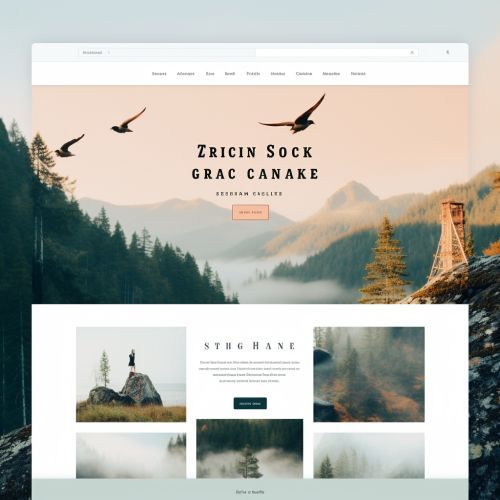Visual Hierarchy
Introduction
Visual hierarchy is a fundamental concept in visual design that involves the arrangement of elements in a manner that implies importance. It influences the order in which the human eye perceives what it sees. This order is created by the visual contrast between forms in a field of perception. Objects with highest contrast to their surroundings are recognized first by the human eye.
Principles of Visual Hierarchy
Visual hierarchy is not based on a single attribute. It involves multiple principles that work together to create an effective design. These principles include:
Size and Scale
The size and scale of an element greatly influence where the eye goes first. Larger elements attract more attention than smaller ones. This is because larger objects have more visual weight and thus are more noticeable.
Color and Contrast
Color and contrast are also important factors in visual hierarchy. Bright colors tend to attract more attention than dull ones. Similarly, elements that contrast with their surroundings are more noticeable.
Typography
In typography, visual hierarchy helps guide the reader's eye to various parts of the text. It can be achieved through variations in font size, weight, color, and typeface.
Spacing and Grouping
The use of space in a design can also create visual hierarchy. Elements that are closer together are perceived as related, while those further apart are seen as separate. This principle is known as the Gestalt Principle of Proximity.
Alignment and Balance
Alignment and balance also play a role in visual hierarchy. Elements that are aligned create a clean and orderly design, which helps guide the eye. Balance, on the other hand, provides stability and structure to a design.


Importance of Visual Hierarchy
Visual hierarchy is crucial in design for several reasons:
Guides the Eye
Visual hierarchy guides the viewer's eye to move in a certain path across the design. This path is often referred to as the 'flow' of the design.
Improves Usability
By organizing elements according to their importance, visual hierarchy improves the usability of a design. It makes it easier for viewers to understand and interact with the design.
Enhances Aesthetics
Visual hierarchy also enhances the aesthetics of a design. It creates a sense of balance and harmony, making the design more pleasing to the eye.
Applications of Visual Hierarchy
Visual hierarchy is applied in various fields of design, including:
Graphic Design
In graphic design, visual hierarchy is used to guide the viewer's eye to the most important elements first. This is often achieved through the use of size, color, and placement.
Web Design
In web design, visual hierarchy is crucial in organizing information in a way that's easy to understand. It helps guide the user's eye from one element to another in a logical manner.
Architecture
In architecture, visual hierarchy plays a role in how buildings and spaces are perceived. It can influence how people navigate through a space and interact with it.
Conclusion
Visual hierarchy is a key concept in design that helps to guide the viewer's eye and make designs more effective and aesthetically pleasing. By understanding and applying the principles of visual hierarchy, designers can create more effective and engaging designs.
